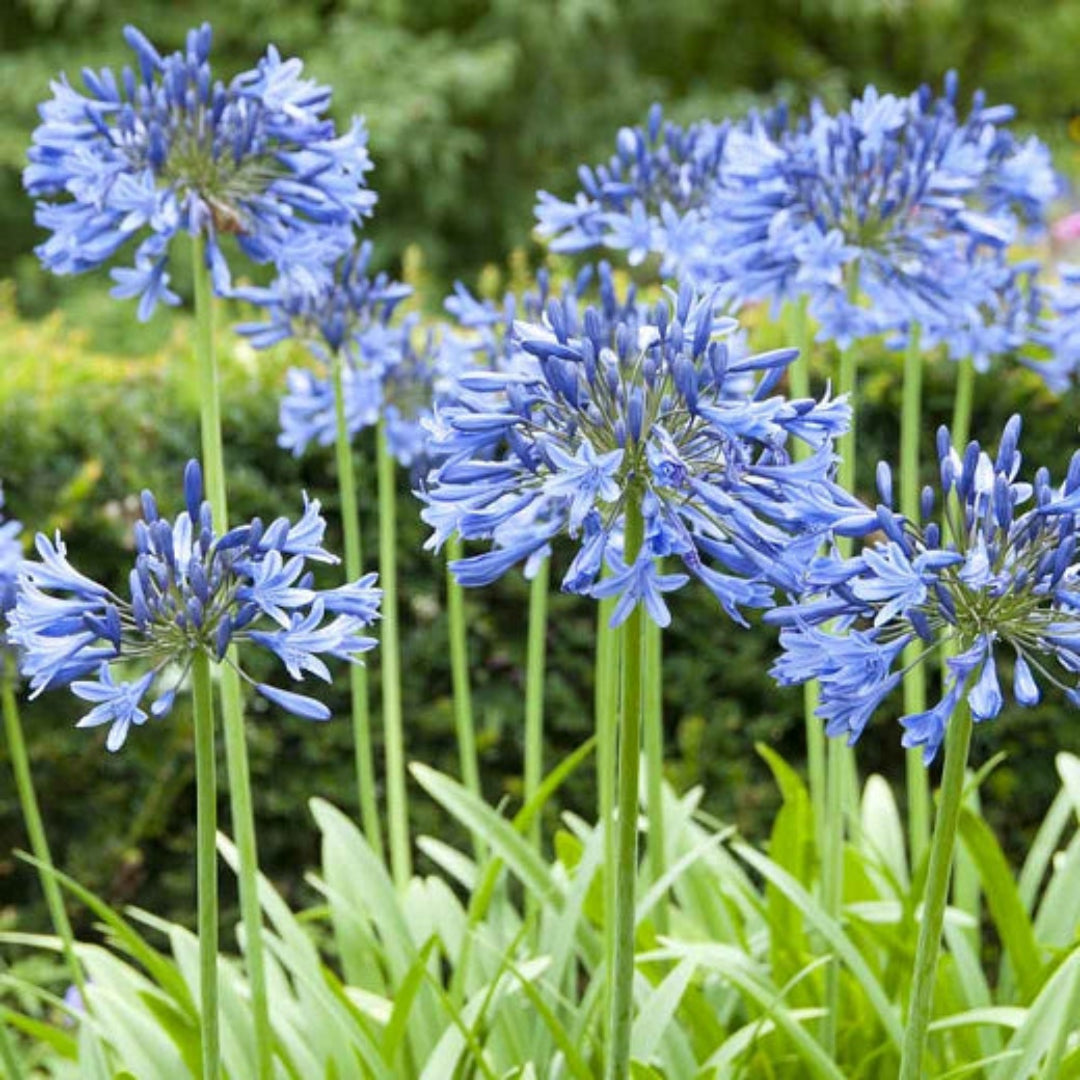Agapanthus Friend Plant Kingdoms: Perfect Pairings for Your Garden
Agapanthus Friend Plant Kingdoms: Perfect Pairings for Your Garden
Blog Article
Releasing the Secret to Successful Agapanthus Farming: Idea for a Flourishing Garden
In the world of gardening, growing agapanthus efficiently calls for a calculated technique that includes different elements of plant care. By comprehending the nuances of agapanthus cultivation, one can produce a setting where these plants grow and bloom perfectly.
Planting Agapanthus: Ideal Practices
When growing Agapanthus, proper dirt prep work is vital for making certain effective development and development of these gorgeous flowers. Agapanthus, typically recognized as Lily of the Nile or African lily, thrives in well-draining dirt with a somewhat acidic to neutral pH level - Agapanthus. Prior to growing, it is essential to amend hefty clay dirts with raw material such as compost or peat moss to boost water drainage and give important nutrients for the plants
To grow Agapanthus, select a place that gets complete sunshine to partial color, as this will advertise healthy development and plentiful flowering. Dig a hole two times the size of the plant's root sphere and position the Agapanthus at the very same depth it was previously expanding. Gently backfill the opening with dirt, pushing down strongly to remove any air pockets around the roots.
Water the newly planted Agapanthus extensively and remain to keep the soil uniformly wet, particularly during the plant's active expanding season. Agapanthus. Using a well balanced fertilizer once a month can further support the plant's development and blooming. By adhering to these ideal practices for planting Agapanthus, you can develop a spectacular display screen of these fascinating blossoms in your yard
Suitable Dirt Issues for Agapanthus
For optimal growth and flowering success of Agapanthus plants, making certain the dirt problems are excellent is critical. Agapanthus likes soil that is rich in nutrients, so incorporating a well balanced plant food during the growing period can promote healthy development and vibrant blossoms.

Watering and Feeding Tips
To guarantee healthy and balanced growth and vivid flowers, appropriate watering and fertilizing strategies are crucial for successful Agapanthus farming. Agapanthus plants benefit from regular watering, especially during the expanding season. It is suggested to water deeply once a week, ensuring the soil is damp however not soaked. Throughout hot weather condition or in pots, even more regular watering may be needed to stop the soil from investigate this site drying out entirely.
When it involves fertilizing Agapanthus, a balanced fertilizer with equivalent components nitrogen, phosphorus, and potassium can be applied in the spring to promote healthy and balanced growth and flowering. Slow-release plant foods are suitable for supplying nutrients slowly over an extended duration. Prevent over-fertilizing, as this can lead to excessive vegetation growth at the expense of blossoms.
Furthermore, integrating natural matter like compost right into the soil can enhance nutrient degrees and enhance dirt structure, assisting in the general health of the Agapanthus plants. By complying with these watering and fertilizing pointers, garden enthusiasts can ensure their Agapanthus plants grow and create spectacular screens of blossoms.
Pruning and Deadheading Methods
Proper trimming and deadheading techniques play a critical function in preserving the wellness and looks of Agapanthus plants, enhancing the crucial methods of watering and feeding for effective cultivation. Trimming Agapanthus involves removing spent flower heads, yellowing or dead fallen leaves, and overall shaping of the plant to advertise much better development. Deadheading, the procedure of eliminating discolored blossoms, not only enhances the plant's look but likewise encourages additional flowering.
When deadheading Agapanthus, it is recommended to clip off the blossom stem at the base utilizing sharp, tidy shears. This procedure reroutes the plant's power from seed manufacturing back into origin and vegetation development, advertising a healthier and a lot more robust plant. Routine deadheading can expand the flowering duration of Agapanthus and avoid self-seeding, which can bring about Going Here congestion.
In regards to trimming, Agapanthus typically benefits from a light trim after blossoming to clean up the plant and motivate fresh development. Reducing back the invested flower stems and removing any dead or broken foliage aids preserve the plant's vigor and overall appearance. Nonetheless, it is necessary to stay clear of reducing into the crown of the plant, as this can compromise its health.

Protecting Agapanthus From Pests and Diseases
Implementing reliable pest and illness monitoring methods is essential to securing the wellness and vigor of Agapanthus plants in cultivation. One common bug that influences Agapanthus is the Agapanthus borer, a caterpillar that passages right into the plant, triggering damage to the flowers and leaves.
In addition to insects, Agapanthus are at risk to conditions such as origin rot and fungal fallen leave places. By see this website remaining cautious and resolving parasite and illness problems without delay, gardeners can aid their Agapanthus grow and grow.

Conclusion
In verdict, effective cultivation of agapanthus needs correct growing techniques, perfect soil problems, adequate watering and fertilizing, normal trimming and deadheading, and protection from diseases and insects. By following these pointers and tricks, gardeners can make certain a flourishing yard loaded with stunning agapanthus flowers. Agapanthus. Bear in mind to maintain constant treatment and focus to information to promote the wellness and longevity of these spectacular plants
When growing Agapanthus, correct soil preparation is vital for making sure effective development and growth of these beautiful flowers.Water the recently planted Agapanthus thoroughly and proceed to keep the dirt evenly wet, especially during the plant's energetic expanding period.For ideal growth and blooming success of Agapanthus plants, guaranteeing the soil problems are excellent is critical. When planting or hair transplanting Agapanthus, make sure the dirt is well-prepared to supply the essential foundation for the plants to establish themselves efficiently. One common insect that impacts Agapanthus is the Agapanthus borer, a caterpillar that passages into the plant, creating damages to the flowers and fallen leaves.
Report this page